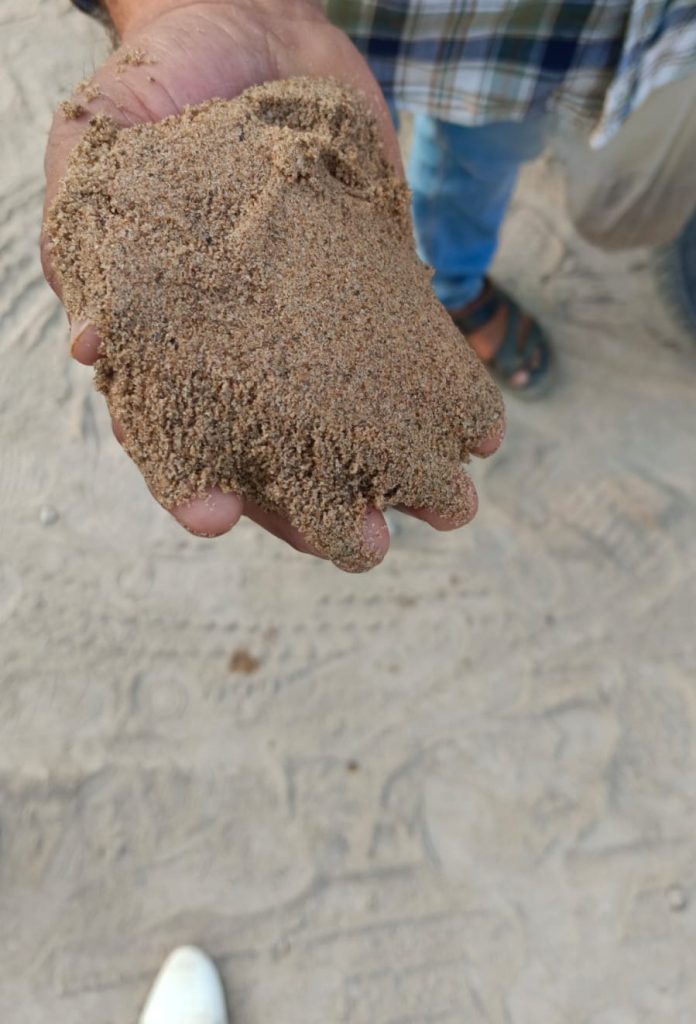the ultimate choice for your construction needs. Sand Suppliers Dealers in Hyderabad in Hyderabad Our refined and non-refined sand varieties are sourced from the pristine Kaleswaram River, ensuring top-notch quality that exceeds industry standards. Build with confidence and strength using our premium river sand, trusted by professionals for its purity and durability. Elevate your projects with Kaleswaram River Sand today!
Kaleswaram is a significant location in the Indian state of Telangana, known for the Kaleswaram Lift Irrigation Project, which aims to harness the waters of the Godavari River for irrigation purposes. When it comes to river sand, the classification and uses are generally similar to other regions. River sand is categorized based on its granular size and quality. Here are some common types of river sand and their use Kaleswaram River Sand Suppliers Dealers Near Me
“Refined sand” and “non-refined sand” are terms that generally refer to different types of sand based on their processing or treatment. Here’s a breakdown of each:
Kaleswaram River Sand Suppliers Dealers in Hyderabad
- Refined Sand:
- Refined sand, also known as processed or washed sand, undergoes additional treatment processes to remove impurities, clay, silt, and organic matter.
- The refining process may involve washing, sieving, and sometimes chemical treatments to improve its quality and purity.
- Uses: Refined sand is preferred in applications where cleanliness and uniformity are critical, such as in construction projects requiring high-quality concrete, plastering, and masonry work. It’s also commonly used in filtration systems and for manufacturing specialized products like glass and ceramics.
- Non-refined Sand:
- Non-refined sand, also known as natural or raw sand, is sourced directly from natural deposits such as rivers, beaches, or quarries without undergoing significant processing.
- This type of sand may contain varying amounts of impurities, including clay, silt, organic matter, and other minerals.
- Uses: Non-refined sand finds application in a wide range of less demanding purposes, including landscaping, filling, embankments, and as a base material in construction projects where strict quality standards are not essential. It can also be used in foundries and abrasive blasting applications.

River sand is categorized based on its granular size and quality. Here are some common types of river sand and their uses:
- Coarse Sand:
- This type of sand has larger particles compared to other types.
- Uses: Coarse sand is commonly used in concrete mixes, as it provides good strength and acts as a filler material. It is also used in landscaping and drainage systems due to its permeability.
- Medium Sand:
- Medium sand has particles smaller than coarse sand but larger than fine sand.
- Uses: It is often used in masonry work, plastering, and laying bricks due to its ability to bind well with cement and provide a smooth finish.
- Fine Sand:
- Fine sand consists of small particles, finer than medium sand.
- Uses: Fine sand is used in activities where a smooth finish is desired, such as plastering interior walls, making mortar for bricklaying, and in sandboxes for children.
- Fill Sand:
- Fill sand typically contains a mixture of various particle sizes and may include some clay content.
- Uses: It is primarily used as a base material for filling trenches, creating embankments, and backfilling around pipes and utilities.
- Bedding Sand:
- Bedding sand is often coarse and uniform in particle size.
- Uses: It is used as a base material for laying pipes, utility lines, and underground tanks. It provides a stable foundation and helps in the proper alignment of the utilities.
- Filter Sand:
- Filter sand has uniform grains and is usually washed to remove impurities.
- Uses: It is commonly used in water filtration systems, swimming pool filters, and septic systems to remove particles and impurities from water.
When sourcing river sand, it’s essential to consider its quality, including factors like cleanliness, absence of organic matter, and appropriate grading, to ensure optimal performance in various applications. Additionally, adhering to environmental regulations and sustainable extraction practices is crucial to minimize ecological impact.

Recent Comments